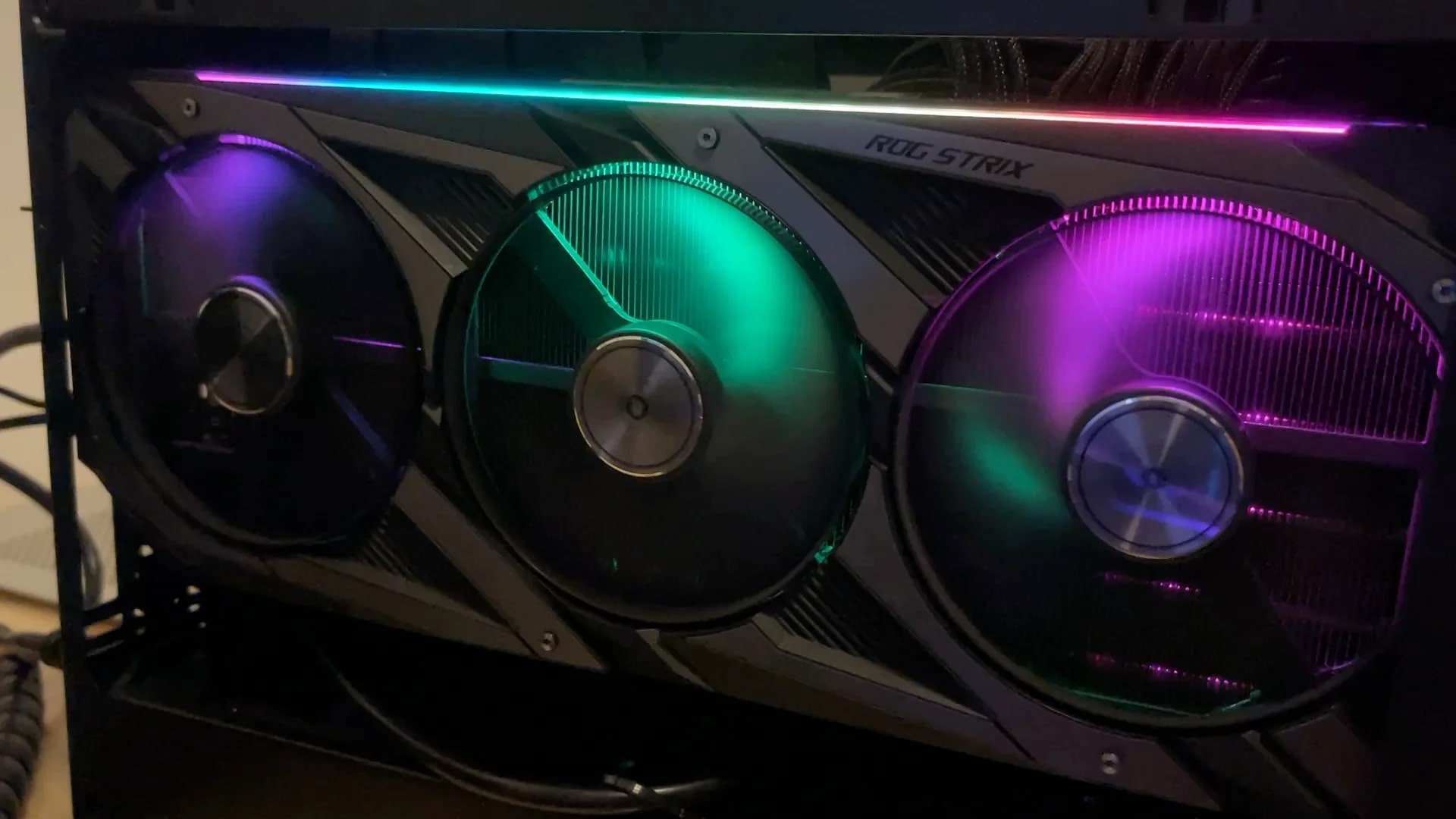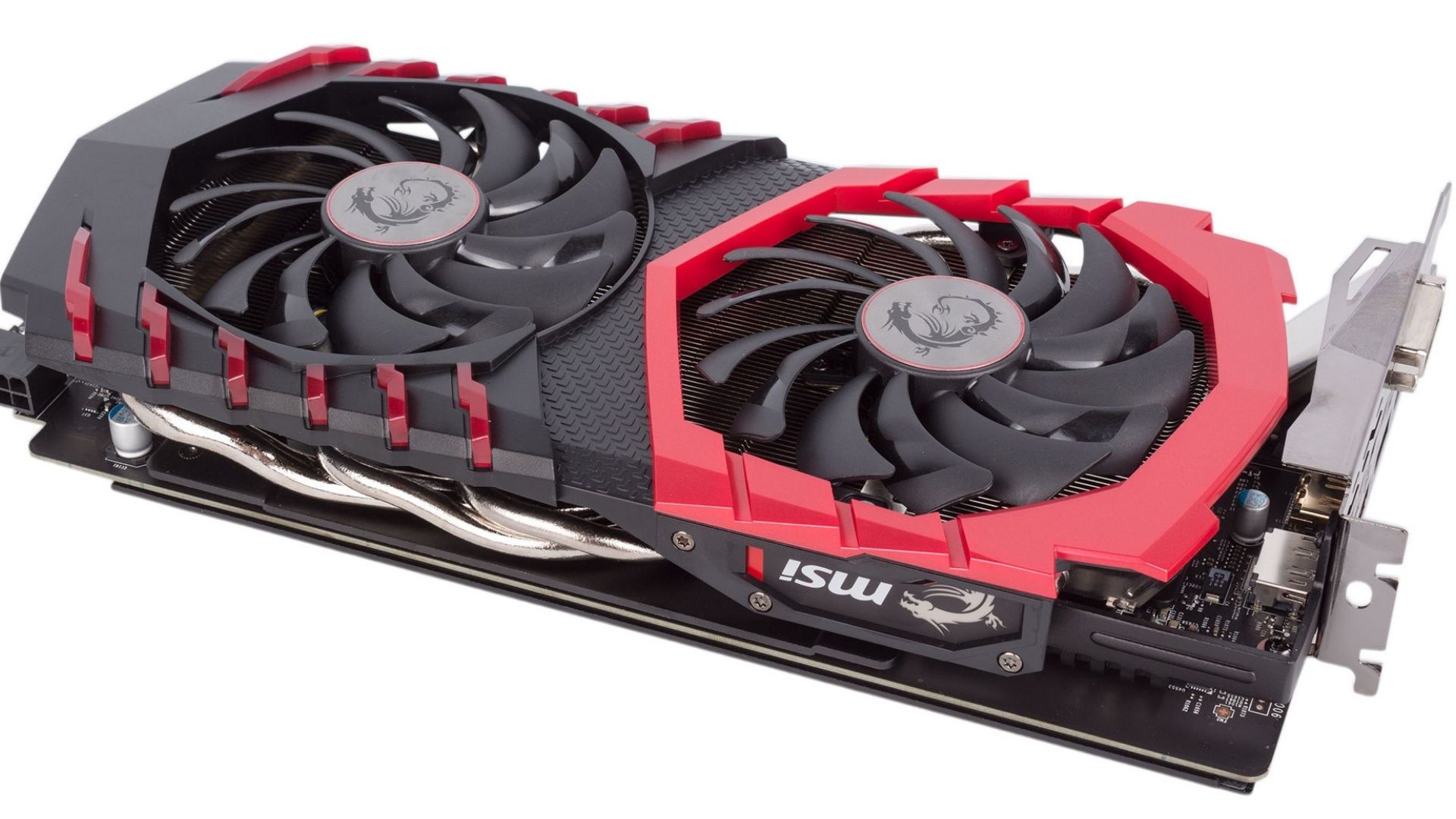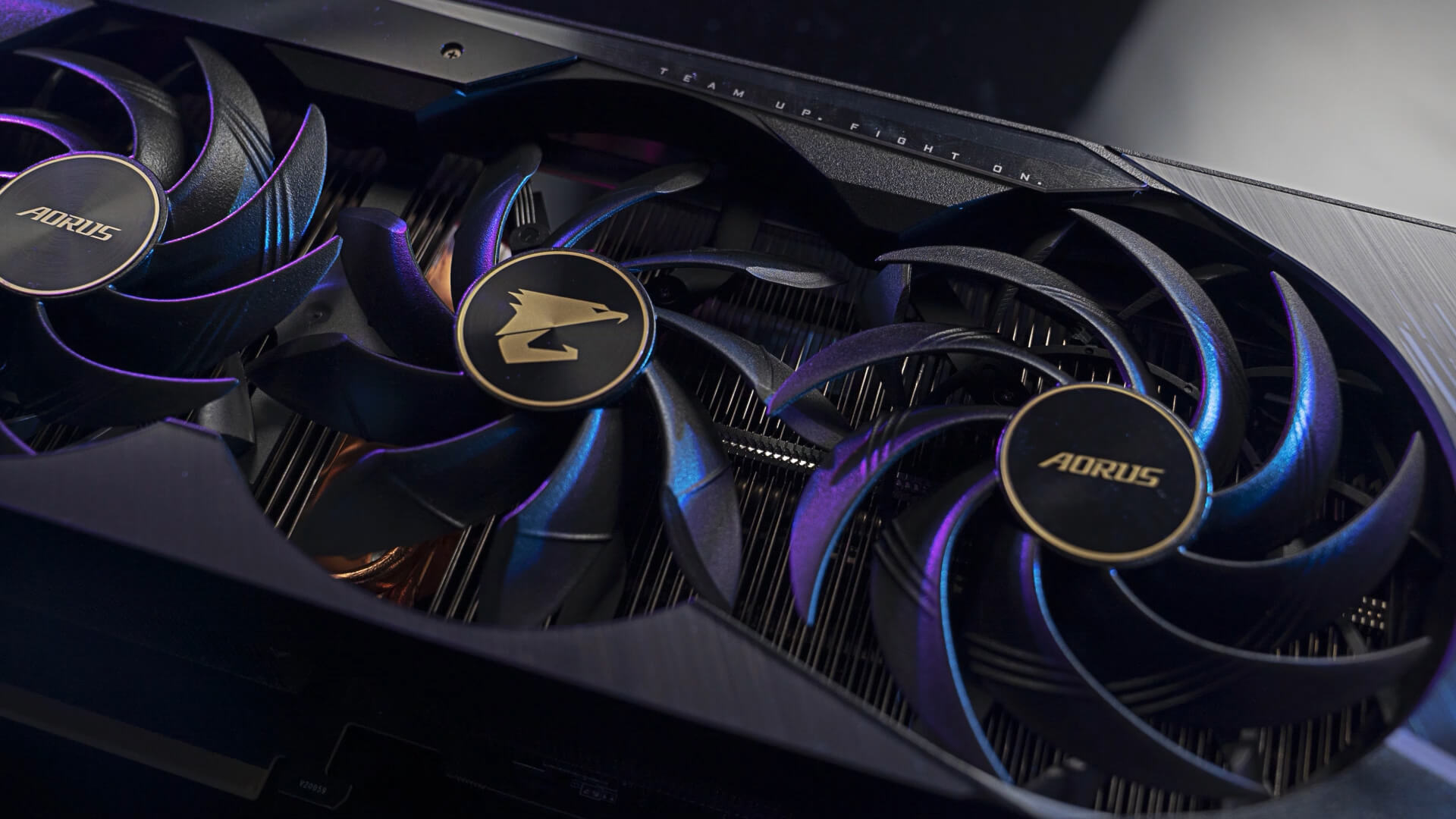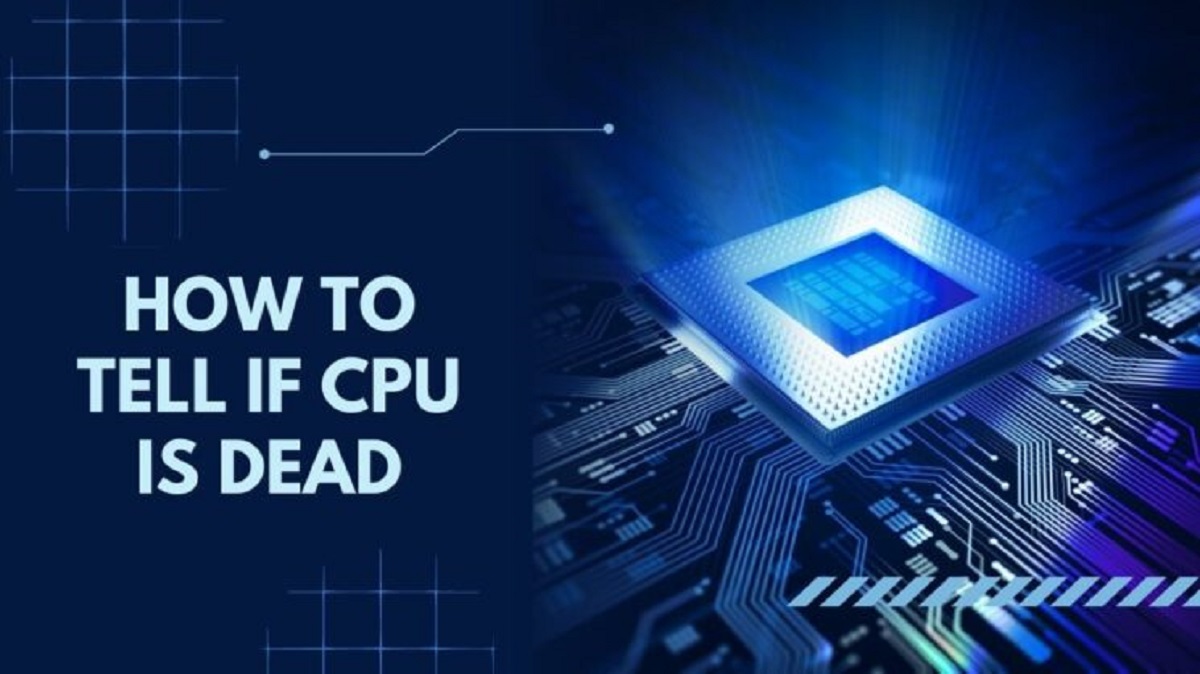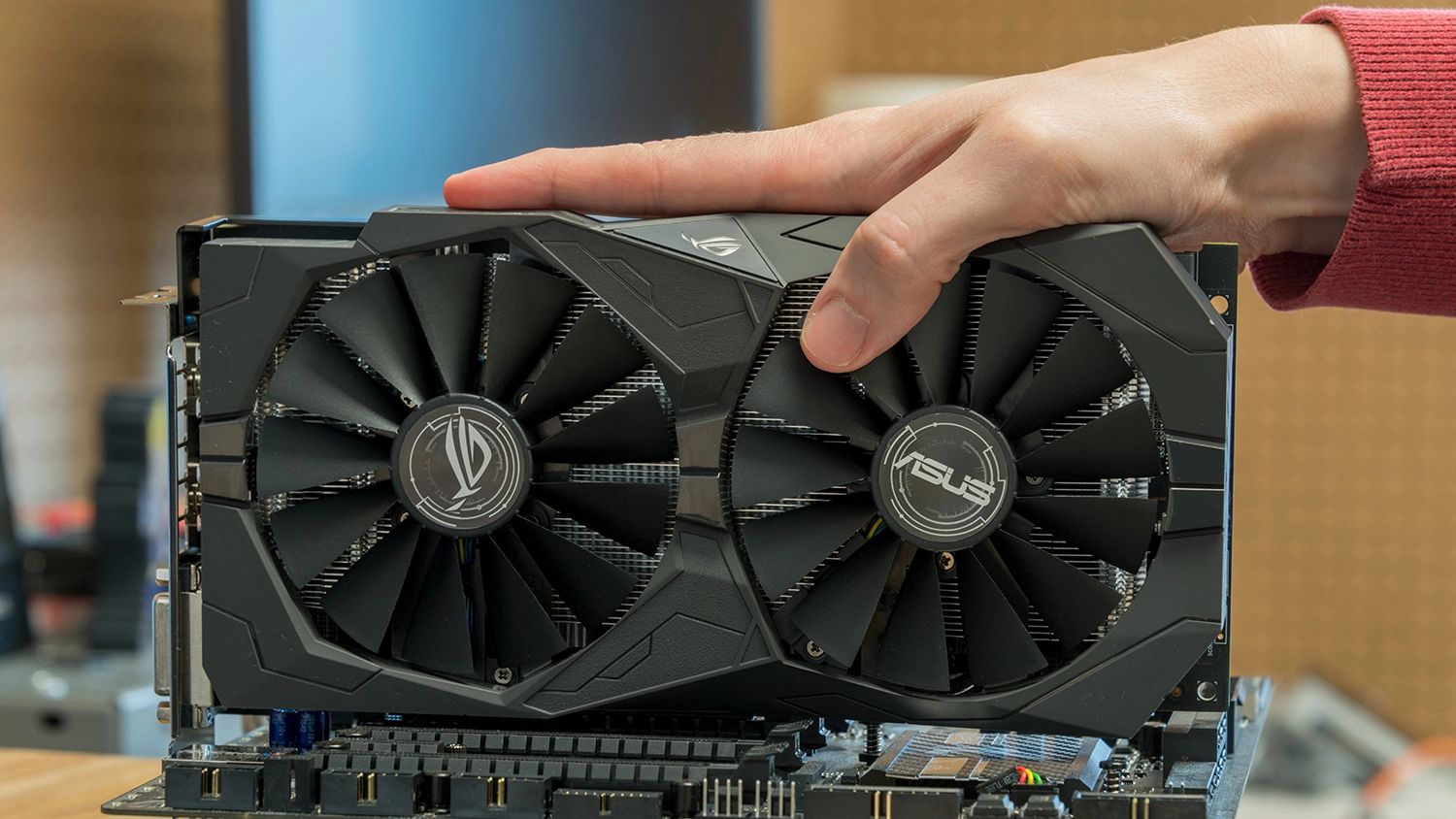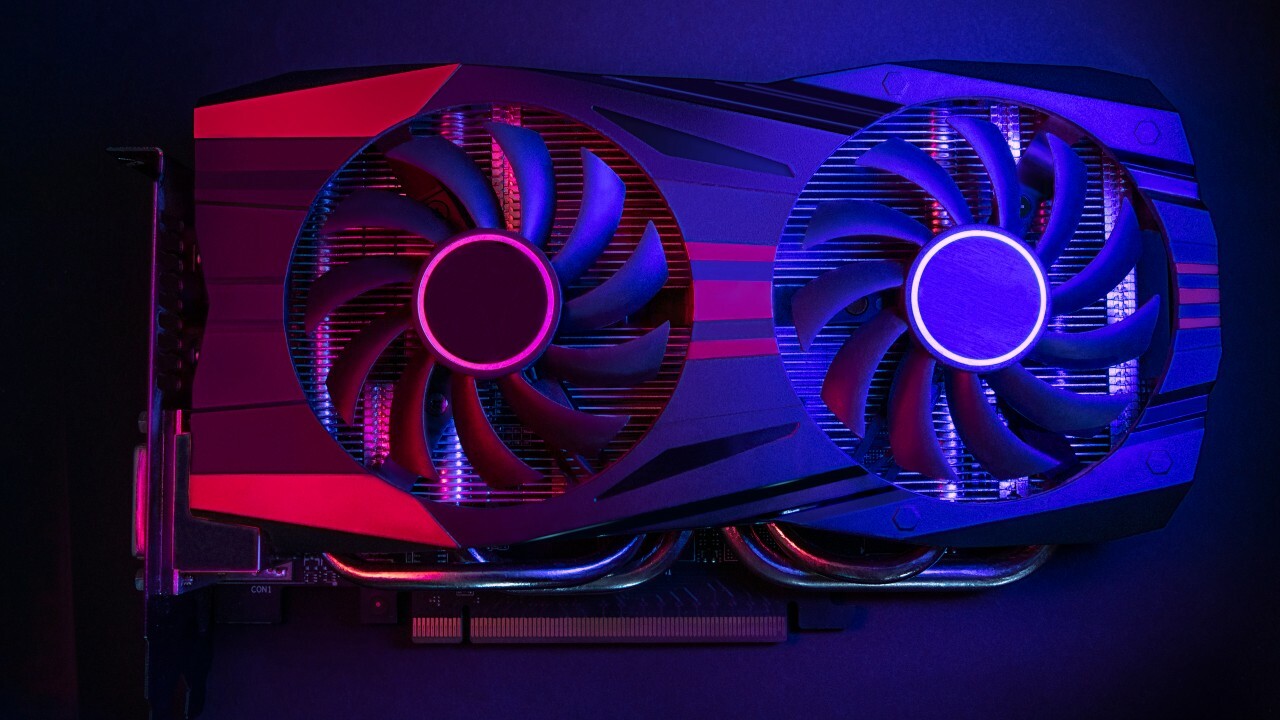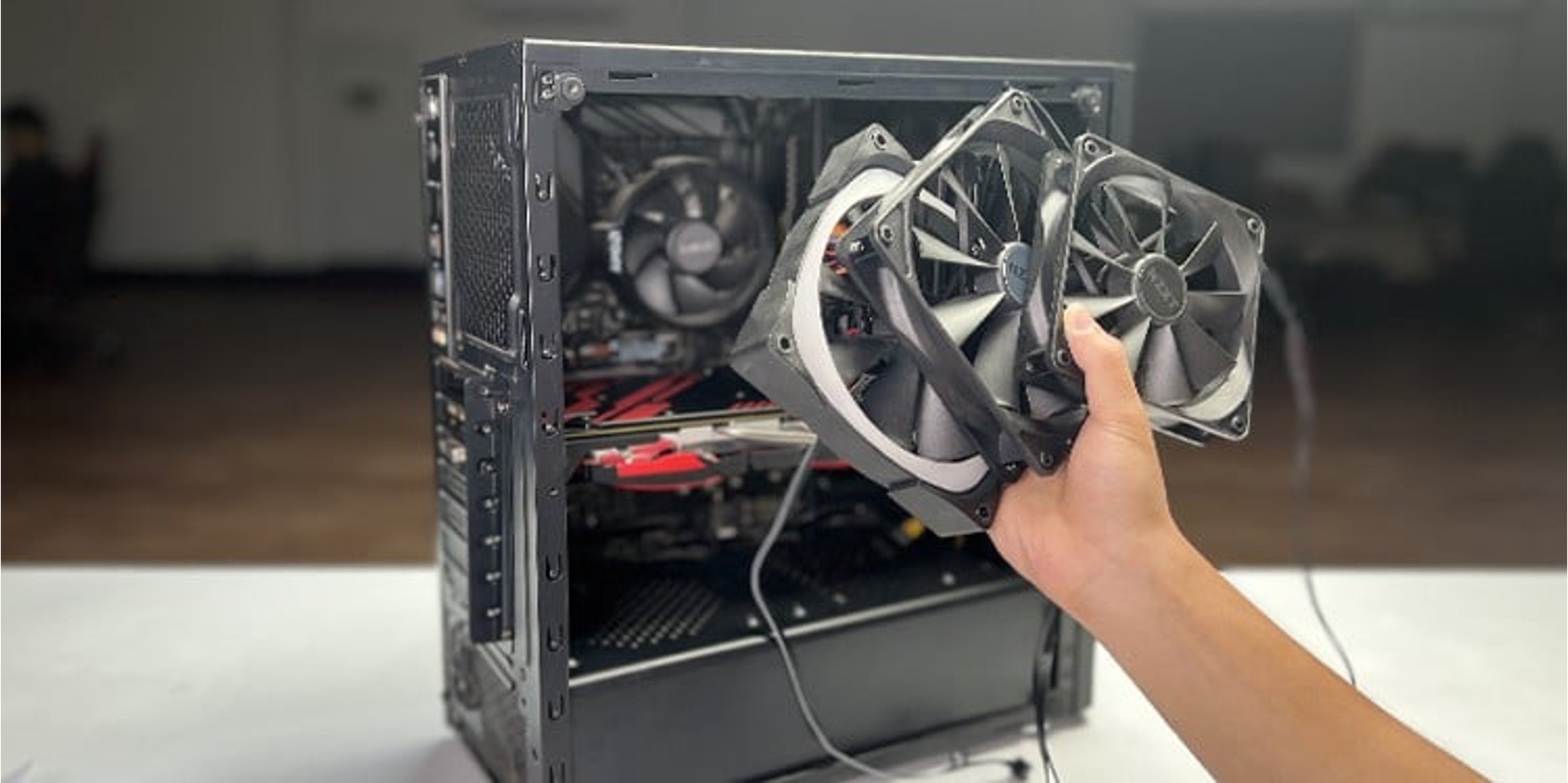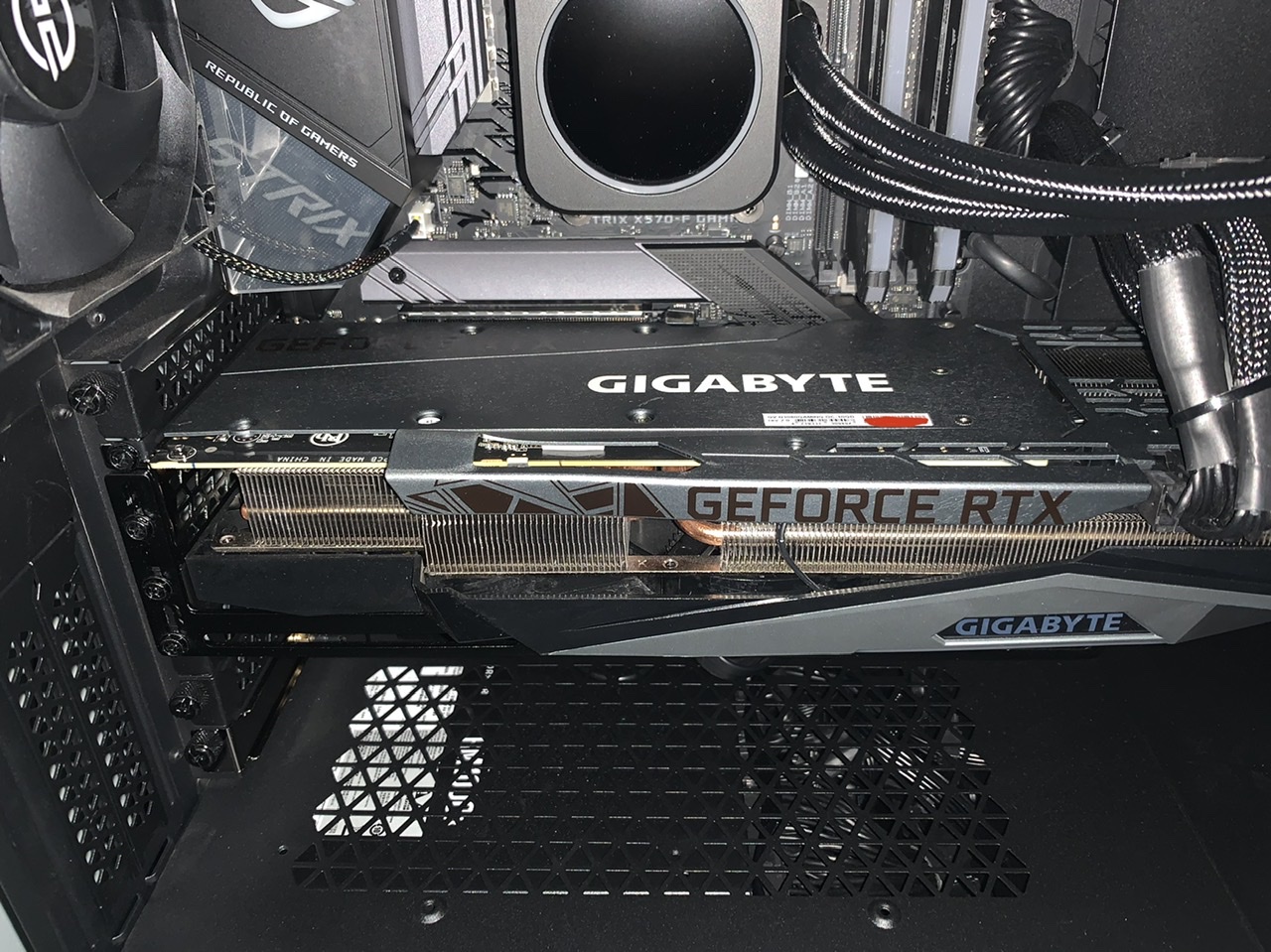Introduction
The graphics card is an essential component in a computer system, responsible for rendering and displaying high-quality images and videos. One critical aspect of a graphics card is its cooling system, which includes fans to dissipate heat generated during intensive tasks like gaming or multimedia editing. However, you may encounter a situation where your graphics card fans are not spinning.
This issue can be concerning for several reasons. Running a graphics card without functioning fans can lead to overheating, which can result in performance issues, instability, and even permanent damage to the card. It is crucial to identify the cause behind why your graphics card fans are not spinning and take prompt action to resolve the issue.
In this article, we will explore some common reasons for graphics card fans not spinning. By understanding these factors, you can effectively troubleshoot and rectify the problem, ensuring that your graphics card functions optimally without any temperature-related concerns. Let’s dive into the possible causes and solutions for this issue.
Common reasons for graphics card fans not spinning
When you encounter the issue of graphics card fans not spinning, several factors could contribute to this problem. Understanding these common reasons will help you identify and address the issue effectively. Let’s explore some possible causes:
- Fan control settings: Some graphics cards come with customizable fan control settings that allow users to adjust the fan speed manually. If the fan control settings are set to a low or silent mode, the fans may not spin unless the GPU reaches a certain temperature threshold. Check your graphics card software or BIOS settings to ensure that the fans are set to an appropriate speed.
- Thermal management policies: Graphics card drivers and software often incorporate thermal management policies to regulate fan speed based on temperature. If these policies are set too conservatively, the fans may not engage even when the GPU is under load. Review your graphics card settings to ensure that the thermal management policies are optimized for efficient cooling.
- Insufficient load on the graphics card: Graphics card fans may not spin if the GPU is not being utilized heavily. When performing regular desktop tasks or simple web browsing, the GPU may not generate enough heat to activate the fans. However, if you start running a graphics-intensive application or game, the fans should kick in to cool the GPU.
- Defective or faulty fans: It is possible that the graphics card fans themselves are defective or faulty. Over time, fans can wear out or become obstructed, preventing them from spinning properly. Inspect the fans for any physical damage or obstructions, and consider replacing them if necessary.
- Power supply issues: In some cases, inadequate power supply to the graphics card can cause the fans to not spin or operate at a lower speed. Ensure that your power supply unit can accommodate the power requirements of your graphics card, and consider upgrading if necessary.
- BIOS or driver issues: Outdated or incompatible BIOS or graphics card drivers can also interfere with the proper functioning of the fans. Make sure you have the latest drivers installed, and consider updating your system’s BIOS to ensure compatibility and stability.
- Hardware compatibility problems: Certain hardware configurations, such as incompatible motherboards or improper installation of the graphics card, can lead to fan-related issues. Double-check that your graphics card is correctly installed and compatible with your system.
- Overheating graphics card: Although it may seem counterintuitive, an overheating graphics card can cause the fans to stop spinning. When the temperature exceeds a certain threshold, the card may enter protection mode and shut down the fans to prevent damage. Ensure proper cooling and ventilation within your system, including clean air filters and proper cable management.
- Fan damage or obstruction: Physical damage to the fans or obstructions, such as dust or debris, can impact their ability to spin. Regularly clean your graphics card and fans to prevent any obstructions and ensure their smooth operation.
By considering these common reasons for graphics card fans not spinning, you can troubleshoot the issue more effectively. Depending on the specific cause, you can take the necessary steps to resolve the problem and ensure optimal cooling for your graphics card.
Fan control settings
One common reason why graphics card fans may not be spinning is due to the fan control settings. Many modern graphics cards come with customizable fan control options that allow users to manually adjust the fan speed according to their preferences. These settings can be accessed through the graphics card software or BIOS.
If the fan control settings are configured to a low or silent mode, the fans will remain idle until the GPU reaches a certain temperature threshold. This is often done to reduce noise levels during less demanding tasks when the graphics card doesn’t generate much heat. However, if the GPU starts to run more intensive applications or games, the temperature will increase, triggering the fans to spin faster and cool down the hardware.
To check and adjust the fan control settings, you can use the control panel software provided by your graphics card manufacturer. Typically, you can find an option to set the fan speed to automatic, which allows the system to regulate the fan speed based on the GPU temperature. Alternatively, you can choose a manual setting, where you can set a fixed fan speed regardless of the temperature.
It’s important to find the right balance in fan control settings. Setting the fans to spin at a very high speed constantly can generate unnecessary noise and wear out the fans more quickly. On the other hand, setting them too low can result in insufficient cooling, leading to higher temperatures and potentially performance issues or hardware damage.
Therefore, it’s recommended to choose the automatic setting on the fan control software, as it allows the system to dynamically adjust the fan speed according to the GPU temperature. This ensures that the fans spin at an optimal speed to keep the graphics card temperature within a safe range without unnecessary noise.
If you’ve recently updated your graphics card driver or BIOS, it’s also worth checking the fan control settings again. Sometimes, updating the driver or BIOS can reset the fan control settings to default, and you might need to readjust them to your preferred configuration.
By reviewing and adjusting the fan control settings, you can ensure that your graphics card fans spin at the appropriate speed to keep your GPU cool while maintaining an acceptable noise level. It’s important to find the right balance for your specific system requirements and personal preferences.
Thermal management policies
Thermal management policies are an important aspect of graphics card functionality, as they regulate the fan speed based on the GPU temperature. These policies are implemented in the graphics card drivers or software to ensure efficient cooling while maintaining a balance between performance and noise levels.
When the thermal management policies are too conservative, the graphics card fans may not engage even when the GPU is under load. This can be a common reason why the fans are not spinning as expected.
To check and adjust the thermal management policies, you need to access the graphics card software or control panel provided by the manufacturer. Within the software, you should be able to locate the thermal management settings, which may be labeled differently depending on the graphics card brand.
There are usually two main options for thermal management: manual and automatic. In the manual mode, you can set a fixed fan speed regardless of the GPU’s temperature. This allows you to have more control over the cooling process, but it can result in higher noise levels and potentially inefficient cooling if not set correctly.
On the other hand, the automatic mode adjusts the fan speed dynamically based on the GPU temperature. The system will increase or decrease the fan speed as needed to ensure optimal cooling while keeping the noise levels within an acceptable range.
It’s generally recommended to use the automatic mode for thermal management, as it takes into account the temperature fluctuations during different tasks and adjusts the fan speed accordingly. This helps to prevent the GPU from overheating while maintaining a quieter system during less demanding tasks.
If you’re experiencing issues with the fans not spinning while the GPU is under load, it’s worth checking the thermal management policies and making sure they are set to the automatic mode. Sometimes, after updating the graphics card driver or software, the thermal management settings can be reset to default, requiring you to readjust them manually.
By ensuring that the thermal management policies are optimized, you can guarantee that the graphics card fans spin at the appropriate speed to keep the GPU temperature under control. This will help maintain stable and reliable performance while minimizing the risk of overheating.
Insufficient load on the graphics card
If you notice that your graphics card fans are not spinning, it may be due to insufficient load on the GPU. Graphics card fans are designed to activate and spin faster when the GPU is under heavy load, producing more heat.
During regular desktop tasks, such as web browsing, word processing, or streaming videos, the GPU may not be utilized enough to generate substantial heat. In such cases, the fans may remain idle or spin at a lower speed to conserve energy and minimize noise.
If you suspect that the lack of fan activity is due to insufficient load on the graphics card, you can perform a few tests to confirm:
- Run graphics-intensive applications: Open a graphics-intensive program, such as a video game or a 3D rendering software, and monitor your GPU temperature and fan speed. If the GPU’s temperature rises significantly and the fans start to spin faster while running these applications, it indicates that the fans are functioning correctly.
- Check GPU load and fan speed: Utilize software tools like GPU-Z or MSI Afterburner to monitor the GPU load and fan speed in real-time. This will give you insights into the GPU’s utilization and whether the fans are responding accordingly.
If the tests confirm that your graphics card fans are not spinning due to insufficient load, there’s generally no cause for concern. Modern graphics cards are designed to operate efficiently and adjust fan speed based on demand, ensuring that cooling is provided when necessary.
However, if you want the fans to spin at a constant speed regardless of the GPU load, you may have the option to adjust the fan control settings in your graphics card software. Refer to the manufacturer’s documentation or support resources to determine if this feature is available for your specific graphics card model.
Keep in mind that running the fans at a high speed constantly can increase noise levels and wear out the fans more quickly, so it’s important to consider the balance between cooling performance and noise levels based on your usage requirements.
By understanding the behavior of the graphics card fans and the load on your GPU, you can ensure that they function as intended, providing the appropriate cooling when needed and maintaining a quiet computing experience during light tasks.
Defective or faulty fans
If you have checked the fan control settings and thermal management policies, and your graphics card fans are still not spinning, it could indicate that the fans themselves are defective or faulty.
Over time, fans can wear out, develop bearing issues, or become obstructed by dust and debris. These factors can prevent the fans from spinning properly, resulting in inadequate cooling for the graphics card.
To determine if the fans are defective or faulty, you can perform the following steps:
- Visual inspection: Carefully inspect the graphics card fans for any physical damage, such as broken blades or bent fan frames. Additionally, check for any obstructions such as dust, debris, or cable wires that may be preventing the fans from spinning freely.
- Clean the fans: Use compressed air or a soft brush to remove any dust or debris that may have accumulated on the fans. Ensure that the fans are clean and able to rotate without any hindrances.
- Test the fans externally: If possible, try connecting the graphics card fans to a different power source to test their functionality independently. This will help determine if the issue lies with the fans themselves or with the power connection on the graphics card.
- Consider replacing the fans: If the fans are visibly damaged or do not spin even after cleaning and testing, it is likely that they are defective and need to be replaced. Contact your graphics card manufacturer or a computer hardware specialist for assistance in finding the appropriate replacement fans.
It’s worth noting that some graphics cards have fans that do not spin until a certain temperature threshold is reached. This is known as fanless or passive cooling. In such cases, the fans are designed to remain idle under normal operating conditions. However, if you are experiencing issues with cooling or high GPU temperatures, it’s recommended to consult the graphics card manufacturer or a professional technician for further guidance.
Ensuring that your graphics card fans are functioning properly is crucial to maintain optimal cooling for your hardware. Defective or faulty fans can lead to overheating, reduced performance, and potentially permanent damage to the graphics card. By taking the necessary steps to assess and rectify any issues with the fans, you can prolong the lifespan of your graphics card and ensure its reliable operation.
Power supply issues
If your graphics card fans are not spinning, it’s possible that the issue lies with the power supply. Insufficient power supply can prevent the fans from operating correctly, leading to inadequate cooling for the graphics card.
Here are some factors to consider when troubleshooting power supply issues:
- Power supply capacity: Make sure that your power supply unit (PSU) can provide enough power to support the graphics card and its associated components. Graphics cards with higher power requirements may need a PSU with higher wattage output to operate properly. Refer to the specifications of your graphics card and PSU to ensure compatibility.
- Power supply connections: Ensure that all necessary power connections to the graphics card are securely plugged in. Some high-performance graphics cards may require additional power connectors, such as 6-pin or 8-pin PCIe power connectors, to provide adequate power for proper operation.
- Power supply cables: Check the condition of the power supply cables. Cables that are damaged, frayed, or improperly connected can disrupt the power flow to the graphics card, affecting the fan’s ability to spin. If necessary, replace the cables or ensure they are properly seated in their respective connectors.
- Faulty power supply: In some cases, the power supply itself may be faulty or not functioning correctly. A faulty power supply can result in irregular power delivery or insufficient power supply to the graphics card. Consider testing the graphics card with a different power supply unit or consult a professional technician to determine if the power supply needs to be replaced.
Power supply issues can have a significant impact on the functionality of your graphics card, including the operation of the fans. It’s important to ensure that your system has a stable and sufficient power supply to support the demands of the graphics card and its associated components.
If you’re unsure about the power supply requirements or encounter persistent issues with the graphics card fans not spinning, it’s recommended to consult the graphics card manufacturer or a professional technician for further assistance. They can help diagnose any power supply-related problems and recommend the appropriate steps for resolving the issue.
BIOS or driver issues
If you find that your graphics card fans are not spinning, it’s possible that the issue stems from BIOS or driver-related problems. Outdated or incompatible BIOS settings or graphics card drivers can interfere with the fan’s operation and lead to improper cooling.
Here’s what you can do to address BIOS or driver issues:
- Update your graphics card drivers: Visit the website of your graphics card manufacturer and check for the latest driver updates specifically designed for your graphics card model. Installing the most recent drivers can often resolve compatibility issues and ensure optimal performance.
- Verify BIOS settings: Access the BIOS settings on your computer and ensure that the settings related to the graphics card and fan control are configured correctly. Incorrect settings can prevent the fans from spinning or cause them to operate at lower speeds. If you’re unsure about the optimal BIOS settings, consult the manufacturer’s documentation or seek assistance from a professional technician.
- Reset BIOS settings: If you suspect that BIOS settings may be causing the fan issue, you can reset the BIOS to its default settings. This will revert any changes you made and reset the fan control settings to their default values. Be cautious when performing a BIOS reset, as it may affect other system settings. Refer to your motherboard or computer manual for instructions on how to reset the BIOS.
- Rollback driver updates: If you recently updated your graphics card drivers and noticed the fan issue afterward, it’s possible that the new drivers are causing the problem. In such cases, you can try rolling back to the previous version of the driver and see if the fan operation returns to normal. Navigate to the Device Manager, locate your graphics card, and select the option to roll back the driver.
It’s worth noting that BIOS and driver issues can sometimes be interconnected, with each affecting the other’s functionality. Therefore, it’s essential to ensure that both are up to date and properly configured.
If you continue to experience problems with the graphics card fan after updating the drivers and verifying the BIOS settings, it may be helpful to contact the graphics card manufacturer’s support team or consult a professional technician. They can provide specific guidance and troubleshooting steps based on your system configuration.
Resolving BIOS or driver issues can often address problems with the graphics card fan, allowing it to function properly and ensure efficient cooling for your system.
Hardware compatibility problems
If you are encountering issues with the graphics card fans not spinning, it’s possible that the problem lies in hardware compatibility. Incompatible hardware configurations can interfere with the fan’s operation and prevent it from spinning as intended.
Here are some factors to consider when troubleshooting hardware compatibility problems:
- Motherboard compatibility: Ensure that your graphics card is compatible with your motherboard. Check the motherboard’s specifications and compatibility lists provided by the motherboard manufacturer or graphics card manufacturer to verify compatibility.
- PCIe slot compatibility: Ensure that your graphics card is properly seated in the PCIe slot and that the slot is functioning correctly. If the PCIe slot is damaged or incompatible with your graphics card, the fan may not receive adequate power or fail to operate altogether.
- Power supply compatibility: Verify that your power supply unit (PSU) is compatible with your graphics card and can provide sufficient power. Some high-performance graphics cards may require a specific minimum wattage for proper operation. A power supply with inadequate wattage or incompatible power connectors can prevent the fan from spinning as expected.
- Physical space constraints: Ensure that your system has enough physical space to accommodate the graphics card and its associated components, including the fan. Crowded or cramped spaces may restrict the fan’s movement or interfere with airflow, leading to cooling issues.
If you suspect that hardware compatibility issues are causing the fan problem, consider the following steps:
- Verify compatibility: Double-check the compatibility of your graphics card, motherboard, and power supply unit. Ensure that all components are designed to work together harmoniously.
- Inspect connections and seating: Ensure that the graphics card is properly seated in the PCIe slot and that all power connections are secure. Loose connections can disrupt power delivery and affect the fan’s operation.
- Consider hardware upgrades: If compatibility issues persist, you may need to consider upgrading certain components. This may involve upgrading your motherboard, power supply unit, or even the graphics card itself to ensure compatibility and proper functioning.
If you’re unsure about the hardware compatibility or need assistance in diagnosing and resolving the issue, it’s recommended to consult the graphics card manufacturer’s support team or seek guidance from a professional technician. They can provide specific recommendations and guidance based on your system configuration.
By addressing hardware compatibility problems, you can ensure that all components in your system work harmoniously, enabling the graphics card fan to spin and provide optimal cooling for your system.
Overheating graphics card
If your graphics card fans are not spinning, one of the potential causes could be an overheating graphics card. Overheating can occur when the temperature of the GPU rises beyond its safe operating range, triggering protective mechanisms that may result in the fans not spinning.
Here are some considerations when dealing with an overheating graphics card:
- Check GPU temperature: Monitor the temperature of your graphics card using software tools like GPU-Z or MSI Afterburner. If the temperature consistently reaches high levels, it indicates that the GPU is overheating.
- Clean the graphics card: Dust buildup on the graphics card’s heatsinks and fan blades can impede heat dissipation and airflow, leading to increased temperatures. Clean the graphics card using compressed air or a soft brush to remove any dust or debris that may be causing overheating.
- Ensure proper ventilation: Inadequate airflow within the computer case can contribute to overheating. Make sure that your system has proper ventilation with unobstructed air intake and exhaust vents. Consider installing additional case fans or improving cable management to optimize airflow.
- Properly seated heatsink: Ensure that the heatsink on the graphics card is securely fastened and making proper contact with the GPU. A loose or improperly mounted heatsink can reduce the effectiveness of heat dissipation.
- Consider aftermarket cooling solutions: If your graphics card consistently runs hot even after cleaning and optimizing airflow, you may want to consider installing an aftermarket cooling solution, such as an aftermarket GPU cooler or a water cooling system. These alternative cooling options can provide better heat dissipation and help prevent overheating.
- Reduce overclocking: If you have overclocked your graphics card, consider returning it to its default clock speeds. Overclocking can increase the heat output and put additional strain on the cooling system, leading to higher temperatures.
Excessive heat can lead to performance degradation, stability issues, or even permanent damage to the graphics card. It’s important to address overheating promptly to ensure the longevity and reliable performance of your graphics card.
If you continue to experience overheating despite taking these measures, it’s advisable to contact the graphics card manufacturer’s support team or consult a professional technician. They can provide further assistance and guidance to resolve the overheating issue effectively.
By managing the cooling of your graphics card and keeping its temperature within safe limits, you can help ensure that the fans operate as intended, providing optimal cooling for your system and preventing any damage caused by overheating.
Fan damage or obstruction
If your graphics card fans are not spinning, it’s possible that there may be fan damage or obstruction preventing their proper operation. Over time, fans can become damaged, obstructed, or develop mechanical issues, resulting in a lack of fan activity.
Here are some steps to address fan damage or obstruction:
- Visual inspection: Carefully examine the graphics card fans for any visible signs of damage, such as broken or bent blades. Additionally, check for any obstructions like dust, debris, or loose cables that may impede the fan’s movement. It’s important to turn off the computer and disconnect the power supply before inspecting the fans.
- Clean the fans: Use compressed air or a soft brush to remove any accumulated dust or debris that may be hindering the fan’s rotation. Regularly cleaning the fans can help prevent obstructions and ensure optimal airflow and cooling.
- Test fan functionality: If you suspect that the fans are not functioning properly, try connecting them to a different power source to test their operation independently. This can help determine if the issue lies with the fans themselves or with the power connection on the graphics card.
- Consider fan replacement: If the fans are visibly damaged or do not spin even after cleaning and testing, it may be necessary to replace them. Contact the graphics card manufacturer or a computer hardware specialist to obtain the appropriate replacement fans for your model.
It’s crucial to address fan damage or obstruction promptly, as inadequate cooling can lead to overheating, reduced performance, and potential hardware damage.
Additionally, it’s worth noting that some graphics cards have fans that don’t spin until a certain temperature threshold is reached or during heavy load conditions. This feature is known as fanless or passive cooling. It’s important to consult the graphics card’s documentation or contact the manufacturer to determine if your specific graphics card model utilizes fanless cooling.
If you’re uncertain about the fan condition or need assistance with the inspection or replacement process, it’s recommended to consult the graphics card manufacturer’s support team or seek guidance from a professional technician. They can provide specific recommendations and guidance based on your graphics card model and its fan mechanism.
By addressing any fan damage or obstruction, you can ensure proper cooling and operation of your graphics card while avoiding potential overheating issues and maintaining optimal performance.
Conclusion
When your graphics card fans are not spinning, it can be a cause of concern, as proper cooling is crucial for maintaining optimal performance and longevity of the card. Throughout this article, we explored several common reasons why the fans may not be spinning and provided troubleshooting steps to address each issue.
We discussed the importance of checking fan control settings to ensure that they are set correctly, allowing the fans to engage at the appropriate temperatures. Additionally, we highlighted the significance of optimizing thermal management policies in the graphics card drivers or software to regulate fan speed effectively.
Insufficient load on the GPU can also cause the fans to remain idle. We emphasized the importance of running graphics-intensive tasks to trigger the fans to spin. Faulty or defective fans were addressed as a potential cause, suggesting steps for inspection and replacement if necessary.
Furthermore, we explored power supply issues that can impact proper fan operation, emphasizing the need for a compatible and adequately powered system. BIOS or driver issues were identified as possible causes, with recommendations for updating drivers and verifying BIOS settings.
Hardware compatibility problems were discussed, advising users to ensure all components are compatible and correctly connected. Overheating of the graphics card was highlighted as a critical factor in fan performance, prompting actions such as cleaning, improving ventilation, and considering aftermarket cooling solutions.
Lastly, fan damage or obstruction was recognized as a potential issue, with suggestions for visual inspection, cleaning, and potential replacement of the fans.
Addressing these various factors will help resolve the problem of graphics card fans not spinning, ensuring that your graphics card operates within optimal temperature ranges and performs reliably.
If you encounter persistent issues or are unsure about the appropriate steps to take, it is always recommended to consult the graphics card manufacturer’s support team or seek assistance from a professional technician. Their expertise and guidance can help diagnose and resolve specific issues related to your graphics card model.
By understanding the common reasons and troubleshooting methods discussed in this article, you can effectively troubleshoot and resolve the issue of graphics card fans not spinning, safeguarding the performance and longevity of your valuable hardware.







